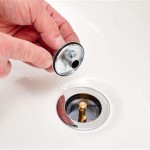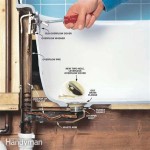Understanding and Choosing a Spout Cover for Your Bathtub Drain
The spout cover for a bathtub drain is a seemingly simple device, yet it serves a crucial function in promoting safety and preventing potential plumbing issues. While often overlooked, a properly selected and maintained spout cover can significantly improve the bathing experience, especially for families with young children. This article aims to provide a comprehensive overview of spout covers, detailing their types, functionalities, selection criteria, installation, and maintenance.
The Primary Functions of a Bathtub Spout Cover
The paramount function of a bathtub spout cover is to mitigate the risk of injury, particularly for children. During bath time, children are often active and may unintentionally bump their heads or other body parts against the hard metal spout. A spout cover acts as a protective barrier, cushioning the impact and reducing the likelihood of cuts, bruises, or more serious injuries. The cover typically comprises soft, impact-absorbing materials such as foam, rubber, or silicone.
Beyond safety, spout covers can also prevent scale buildup and corrosion on the spout itself. Water, especially hard water, can leave mineral deposits on the spout's surface, leading to unsightly scaling and eventual corrosion. A spout cover creates a protective layer that shields the spout from direct water exposure, minimizing the accumulation of mineral deposits. This prolongs the life of the spout and maintains its aesthetic appeal.
Furthermore, some spout covers are designed with integrated temperature gauges. These gauges provide a visual indication of the water temperature, allowing parents to ensure that the bathwater is at a safe and comfortable level for their children. This feature is particularly useful because children are more susceptible to scalding than adults. A spout cover with a temperature gauge provides an extra layer of protection and peace of mind.
Types of Bathtub Spout Covers Available
The market offers a diverse range of bathtub spout covers, each with its own features and functionalities. Understanding the different types is crucial for selecting the most suitable option for specific needs and preferences. Spout covers can be broadly categorized based on their material, design, and attachment method.
One common type is the foam spout cover, typically made from dense foam rubber. These covers are lightweight, affordable, and provide good impact absorption. They are generally easy to install and remove, making them a practical choice for families with young children. However, foam covers may not be as durable as other types and may require replacement more frequently.
Silicone spout covers are another popular option. These covers are made from food-grade silicone, which is non-toxic, heat-resistant, and easy to clean. Silicone covers are more durable than foam covers and can withstand higher water temperatures. They are also available in a variety of shapes and designs, adding a touch of fun to bath time. Some silicone covers feature integrated temperature gauges for added safety.
Inflatable spout covers offer a unique alternative. These covers are typically made from PVC or similar inflatable materials. They provide excellent impact absorption and can be easily deflated for storage when not in use. Inflatable covers often come in fun and playful designs, making them appealing to children. However, they may require periodic inflation to maintain their effectiveness.
Hard plastic spout covers, usually made from durable ABS plastic, offer a more rigid protection. These covers often feature whimsical designs and can incorporate additional features such as bubble blowing capabilities or interactive elements. While they provide good physical protection, they might not offer the same level of cushioning as foam or silicone covers.
Universal fit spout covers are designed to fit a wide range of spout sizes and shapes. They typically feature adjustable straps or clamps that allow for a secure and snug fit. These covers are a convenient option for those who are unsure about the specific dimensions of their bathtub spout. However, it is essential to ensure that the universal fit cover is compatible with the spout's configuration to prevent slippage or instability. Choosing the correct method of attachment for any kind of cover is also crucial to prevent detachment during use.
Key Considerations When Selecting a Bathtub Spout Cover
Choosing the right bathtub spout cover requires careful consideration of several factors. These factors include the spout's dimensions, material safety, ease of installation, durability, and aesthetic appeal. Evaluating these aspects will ensure that the selected cover meets specific needs and preferences.
The first step is to accurately measure the dimensions of the bathtub spout. This includes the diameter or width of the spout, as well as its length. The spout cover should fit snugly over the spout without being too tight or too loose. A loose-fitting cover may easily slip off, while a tight-fitting cover may be difficult to install and remove. Some spout covers come with adjustable straps or clamps to accommodate different spout sizes. These adjustable features can make proper installation easier across a variety of spout styles.
Material safety is another critical consideration, especially for families with young children. The spout cover should be made from non-toxic materials that are free from harmful chemicals such as BPA, phthalates, and lead. It is advisable to look for spout covers that have been certified by reputable organizations such as the Consumer Product Safety Commission (CPSC). Also, it is crucial that no small parts are easily detached and pose a choking hazard.
Ease of installation is an important factor to consider, particularly for those who prefer a quick and hassle-free setup. Spout covers that require specialized tools or complicated installation procedures should be avoided. Look for covers that can be easily installed and removed without causing damage to the spout or the surrounding surfaces. Some spout covers feature simple slip-on designs or adhesive attachments that make installation quick and easy.
Durability is also a key consideration, as the spout cover will be subjected to repeated use and exposure to water and soap. Choose a cover made from durable materials that can withstand frequent use without tearing, cracking, or fading. Silicone and hard plastic covers are generally more durable than foam covers. The method of attachment should also be durable and not easily break or deteriorate.
Finally, the aesthetic appeal of the spout cover should be considered. While functionality is paramount, choosing a cover that complements the bathroom decor can enhance the overall bathing experience. Spout covers are available in a wide range of colors, shapes, and designs to suit different tastes and preferences. Some covers feature playful animal shapes or vibrant colors that can make bath time more enjoyable for children, although safety and practicality should always be prioritized over aesthetics.
The price of a spout cover can vary widely depending on its material, features, and brand. Higher-end spout covers may offer additional features such as temperature gauges or integrated toys, but they typically come at a higher price point. It is important to weigh the cost against the features and benefits of the spout cover to determine the best value for one's budget. Reading reviews from other consumers can also provide valuable insights into the quality and performance of different spout covers.
In the selection process, the type of bathtub faucet is important to consider. Different types of faucets (wall-mounted, deck-mounted, etc.) may work better with certain shaped or style spout covers. In some cases, certain faucet designs limit the ability to properly attach a spout cover. An assessment of compatibility is recommended before purchasing a spout cover.
Installation and Maintenance of Bathtub Spout Covers
Proper installation and maintenance are essential for ensuring the effectiveness and longevity of a bathtub spout cover. The installation process varies depending on the type of cover, but it generally involves cleaning the spout's surface, attaching the cover securely, and testing its stability. Regular maintenance includes cleaning the cover periodically to prevent the buildup of soap scum and mineral deposits.
Before installing the spout cover, thoroughly clean the surface of the bathtub spout. Use a mild detergent and a soft cloth to remove any dirt, grime, or soap scum. Rinse the spout with clean water and dry it completely. This will ensure that the cover adheres properly to the spout's surface.
Follow the manufacturer's instructions for attaching the spout cover. Slip-on covers typically require simply sliding the cover over the spout until it is securely in place. Adhesive covers require peeling off the backing paper and pressing the cover firmly onto the spout. Adjustable covers may require tightening straps or clamps to ensure a snug fit. Always test the stability of the cover after installation by gently pushing and pulling on it to ensure that it does not move or slip off easily.
Regular maintenance is crucial for preventing the buildup of soap scum and mineral deposits on the spout cover. Clean the cover at least once a week using a mild detergent and warm water. Use a soft brush or sponge to scrub away any dirt or grime. Rinse the cover thoroughly with clean water and allow it to air dry completely before reinstalling it. Avoid using harsh chemicals or abrasive cleaners, as these can damage the cover's surface.
Inspect the spout cover regularly for any signs of wear and tear. Look for cracks, tears, or loose attachments. If any damage is detected, replace the cover immediately to prevent potential safety hazards. Regularly checking the grip strength of the spout covers attachment method is also recommended.
For inflatable spout covers, check the air pressure periodically and inflate as needed to maintain their effectiveness. Follow the manufacturer's instructions for inflating and deflating the cover. Store the cover in a dry and clean place when not in use to prevent mold or mildew growth.
When not in use, especially when the bathtub is not regularly used, consider removing the spout cover and storing it in a dry place. This can help extend the life of the cover and prevent the buildup of moisture. Storing the cover upside down may also prevent moisture from accumulating inside.

Spout Guard

Ubbi Gray Bathtub Spout Guard

Keeney 3 4 In Universal Quick Cover Up Bath Drain Stopper Polished Chrome K826 36pc

Bathtub Spout Cover Silicone Faucet For Kids Baby Blue Elephant Bathroom Accessories Free Toys

Tot Bathtub Spout Cover

Bathtub Spout Cover

Gorilla Grip Bathtub Overflow Drain Cover Adds Inches Of Water For Deeper Warmer Bath Suction Cup Seal Plug Stopper Covers Tub Bathroom Spa Accessories Large 6 Inch Diameter Com

Dolphin Bath Spout Cover Blue

Bath Spout Cover Faucet Bathtub Protector For Baby Silicone Gray Hippo Kids Bathroom Accessories Free Toys

Danco 12078 Bathtub Overflow Drain Cover
Related Posts








